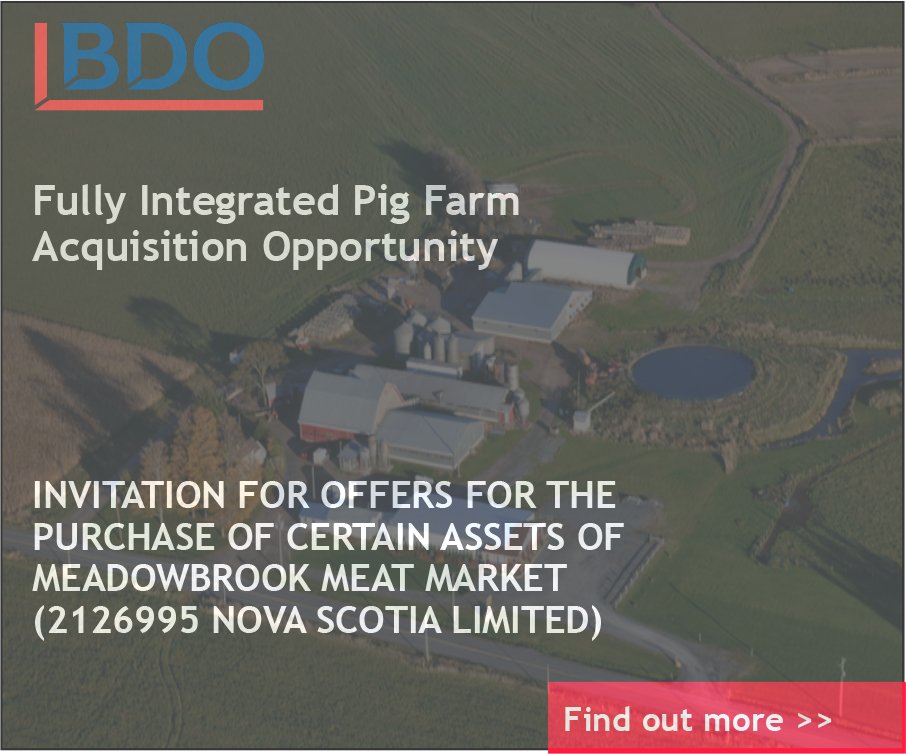“A bright picture for farming in Canada”
/by Emily Leeson
The numbers are in: Canada’s 2021 Census of Agriculture highlights an industry in transition.
“Generally speaking, I actually do see a bright picture for farming in Canada,” said Sylvain Charlebois, senior director of Dalhousie University’s Agri-Food Analytics Lab. “Farmers are getting more assets, have more access to resources, and are becoming more efficient as well.”
While farmers continue to get older – the proportion of farm operators aged 55 and older grew from 54.5 to 60.5 percent between 2016 and 2021 – succession plans have increased in popularity. The proportion of farms reporting a succession plan grew from 8.4 percent in 2016 to 12 percent in 2021.
“The average age, of course, is still quite high and that is still a concern – that hasn’t disappeared,” said Charlebois.
However, the face of farming in Canada is diversifying.
The census reports that the number of female operators has increased for the first time since 1991. In 2021, there were 79,795 female farm operators, up from 77,970 in 2016.
“I think with the new generation coming in, which is probably going to be the case in the next few years, scale is going to be a priority,” added Charlebois.
Small farms in Canada continue to struggle. The census report indicates that consolidation of farms is increasing, with the number of smaller and mid-sized farms declining. Larger farms are taking a bigger portion of the market share: farms reporting at least $2 million in sales accounted for 51.5 percent of total farm operating revenues in 2021 compared with 41.5 percent in 2016.
While described as a “moderate decrease,” the number of farms in Canada continues to dwindle – down 1.9 percent from 2016. However, that decline is the smallest reported in 25 years.
Meanwhile, the amount of farmland in use has also been reduced in recent years. Farms in Canada reported a 3.2 percent decrease in total farm area from 2016.
“That is one thing that concerned me and that I was a bit surprised by,” said Charlebois. “I actually thought it was going to be the opposite.”
With advancing agricultural technologies and a better understanding of soil sciences, Charlebois said he was expecting to see more land put to better use.
“I think people would expect that farmland use would increase in Canada over time, but it doesn’t seem to be the case – at least not today,” he said.
Farmland is significantly more valuable than it was in 2016. The reported total market value of land and buildings for farms in Canada increased by 22.7 percent from the previous census, totalling $603.8 billion in 2021.
However, Charlebois said he doesn’t consider that a negative indicator. “I think it’s a great metric, showing that farming is getting richer,” he said. “I think that increase shows that farmers do have a lot of assets.”
He did stress that farmers have to equip themselves to deal with climate change. “They need to become more efficient,” said Charlebois.
Indeed, the census indicates that efficiency and sustainable agriculture practices are becoming hallmarks of the industry.
Within five years, the proportion of farms that reported using practices such as in-field winter grazing or feeding, rotational grazing, plowing down green crops, planting winter cover crops, and having shelter belts or windbreaks grew from 53.7 to 64.5 percent.
Growing demand for organic products also resulted in some growth for that sector. In 2016, 2.2 percent of farms reported producing organic goods. In 2021, the figure was 3.0 percent.
On-farm renewable energy production (with solar energy production being the most common) also increased. The number of farms reporting it more than doubled, from 10,185 in 2016 to 22,576 in 2021.
The adoption of new technology for efficiency has grown significantly as well. Within five years, the proportion of farms reporting the use of automated guidance steering systems increased by 28.2 percent and the proportion that reported using geographic information system mapping grew by 58.6 percent.
“There is definitely some momentum,” said Charlebois of overall trends in agriculture. “I think it’s quite positive for farming in general.”









